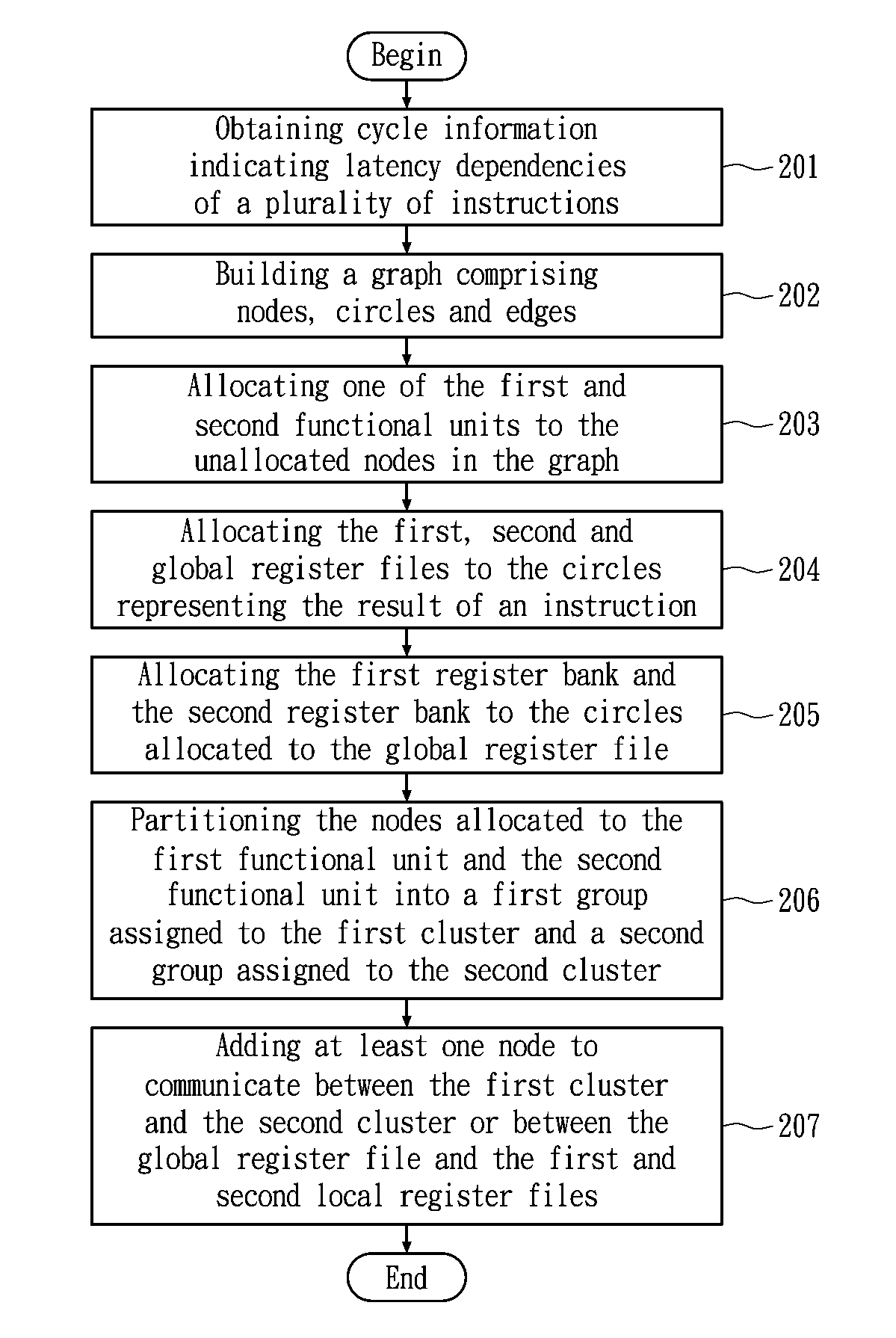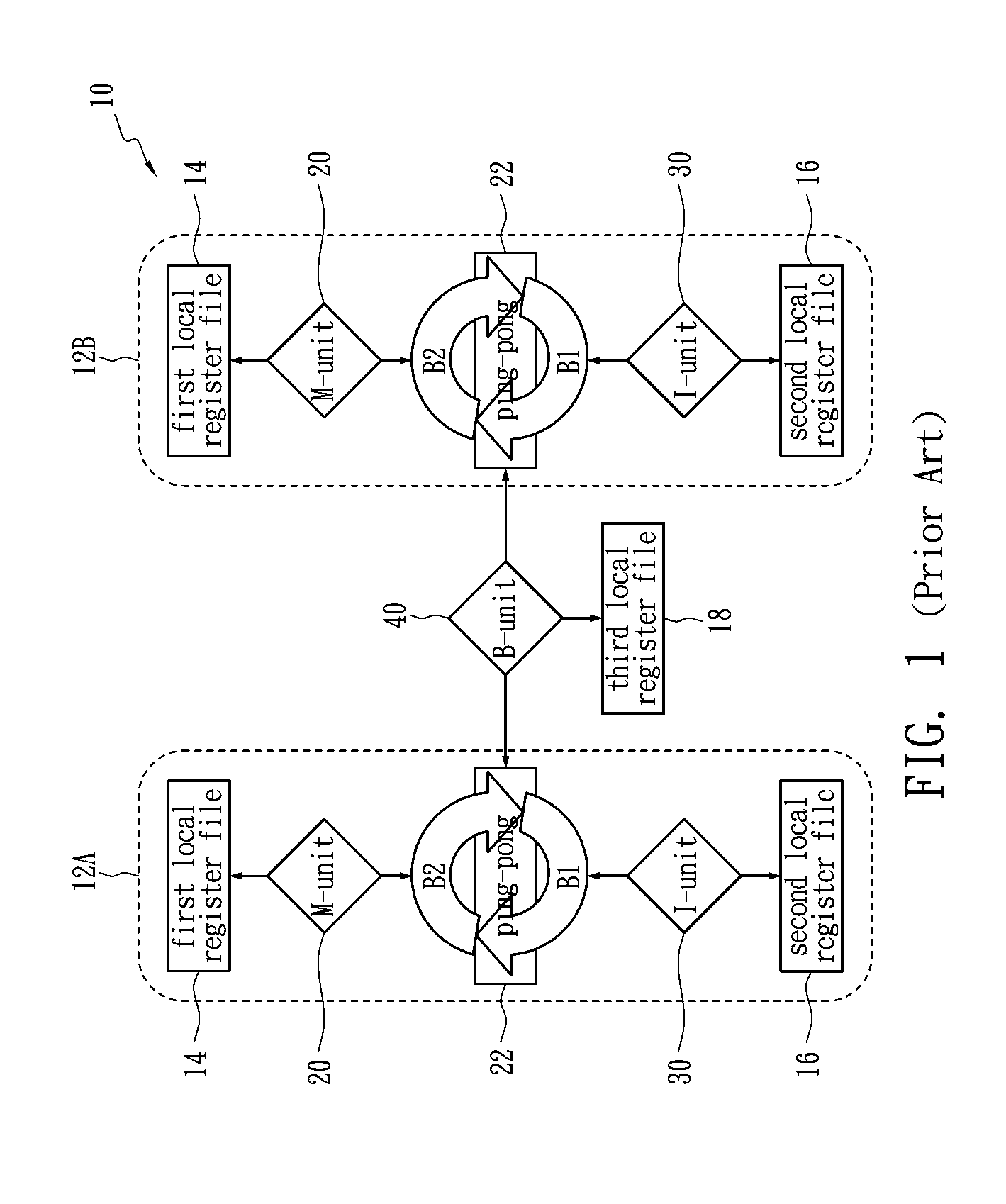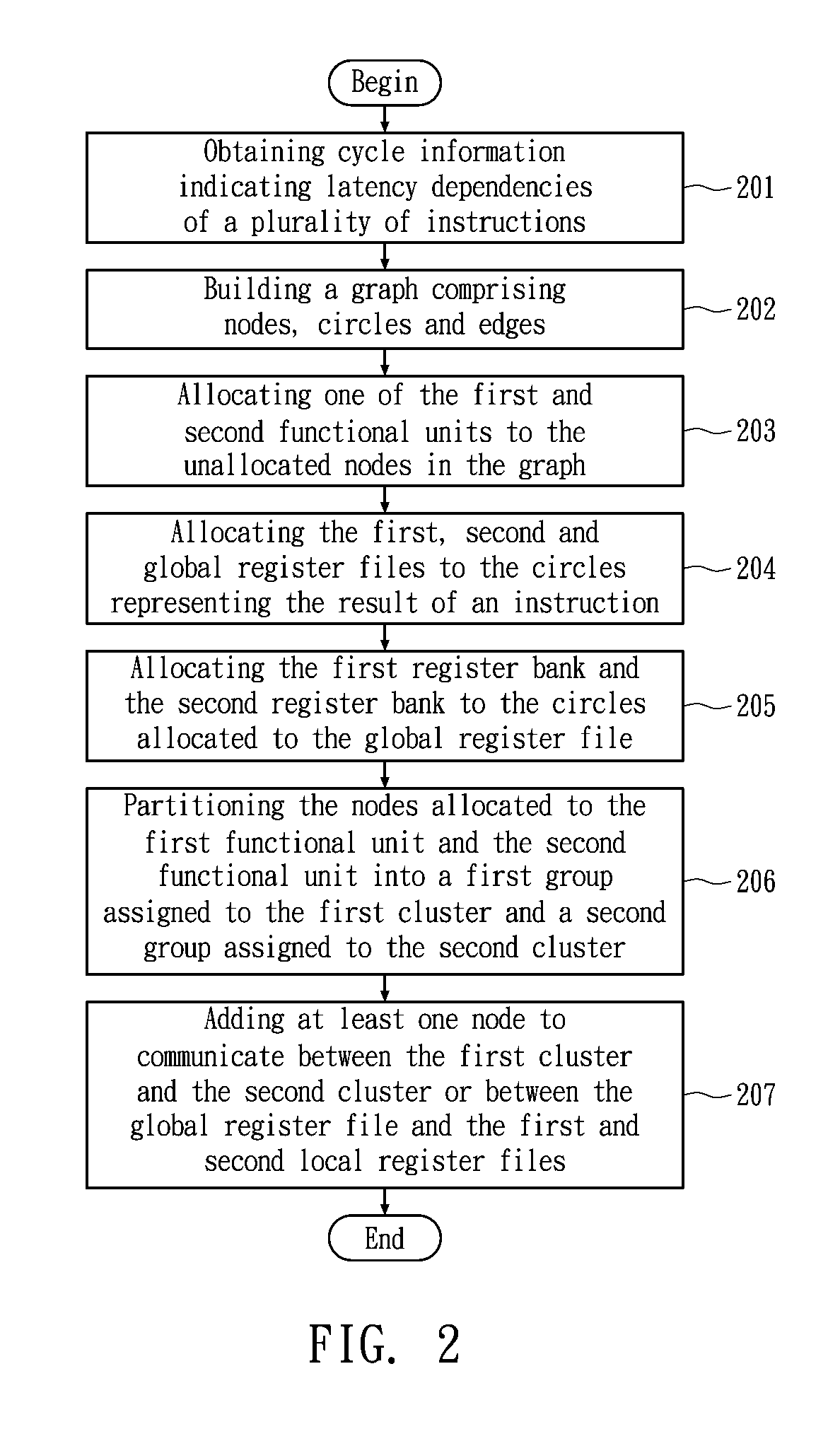Method for allocating registers for a processor based on cycle information
a technology of cycle information and register allocation, applied in the field of method for allocating registers for processors, can solve the problems of not taking into account the cycle information of instructions, and the allocation of registers provided accordingly often fails to reach a preferable
- Summary
- Abstract
- Description
- Claims
- Application Information
AI Technical Summary
Problems solved by technology
Method used
Image
Examples
Embodiment Construction
[0028]FIG. 2 shows a flow chart of the method for allocating registers for a processor based on cycle information according to an embodiment of the present invention. The method shown in FIG. 2 is applicable to the PAC processor shown in FIG. 1. In step 201, cycle information indicating latency dependencies of a plurality of instructions is obtained, and step 202 is executed. In step 202, a graph comprising nodes, circles and edge is built, wherein each node represents an instruction and is either unallocated or is allocated to the first functional unit or the second functional unit, each circle is attached to a node and represents an operand or the result of an instruction, and each edge is connected between two of the circles, indicating data dependency therebetween, and step 203 is executed. In step 203, all of the unallocated nodes in the graph are allocated to one of the first and second functional units according to the nodes already allocated in the path containing the nodes ...
PUM
 Login to View More
Login to View More Abstract
Description
Claims
Application Information
 Login to View More
Login to View More - R&D
- Intellectual Property
- Life Sciences
- Materials
- Tech Scout
- Unparalleled Data Quality
- Higher Quality Content
- 60% Fewer Hallucinations
Browse by: Latest US Patents, China's latest patents, Technical Efficacy Thesaurus, Application Domain, Technology Topic, Popular Technical Reports.
© 2025 PatSnap. All rights reserved.Legal|Privacy policy|Modern Slavery Act Transparency Statement|Sitemap|About US| Contact US: help@patsnap.com



